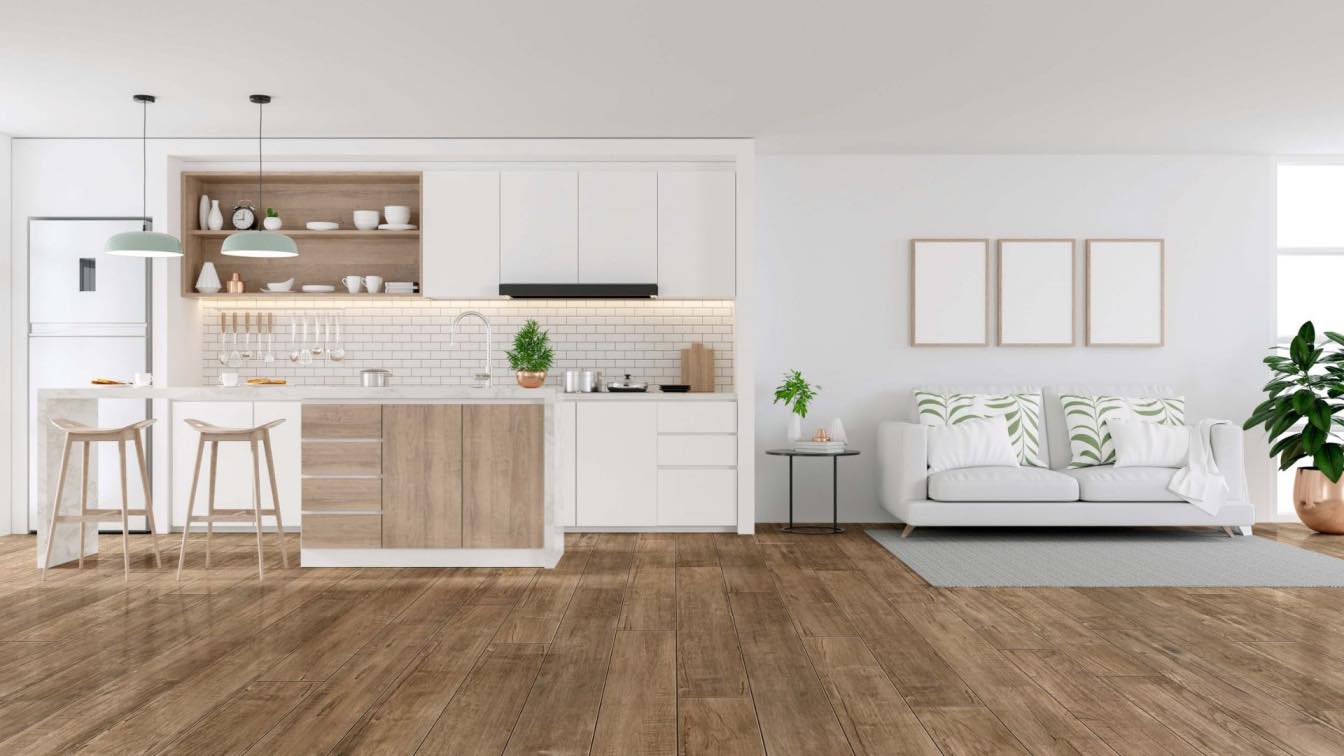When it comes to home renovation and design, the floor is often one of the most overlooked aspects. However, selecting the suitable flooring material for your home is an important decision that can make all the difference in how your space looks and functions. This guide will provide an overview of the different flooring materials, tips on choosing the best option for your home, and advice on properly caring for and maintaining your floors.
1. Ceramic floor tiles
Ceramic floor tiles are one of the most popular flooring materials used in houses due to their durability and relatively low cost. Ceramic tiles are made from clay and other natural minerals and fired in a kiln until hardened. They come in various shapes, sizes, colors, and textures, allowing for more creative design possibilities than some other types of flooring. Ceramic tiles are also resistant to moisture, making them an ideal choice for bathrooms and kitchens. The ceramic floor tiles are also relatively easy to maintain. They should be swept or vacuumed regularly and mopped with a mild detergent solution to remove dirt, grime, and spills. Regular sealing of the tiles will help to protect them from wear and tear, as well as surface staining.
2. Hardwood flooring
Hardwood floors are one of the most classic and timeless high end flooring options available. Hardwood is a natural material that provides a warm, inviting look in any room. It can be custom-stained to match existing décor, or even painted with a new color to give it a fresh look. The finish of hardwood varies depending on the species, but generally has a smooth texture with notable grain patterns. While hardwood is usually more expensive than other types of flooring materials, its quality and longevity often make it worth the extra cost. It should be swept and mopped regularly using a wet mop.
3. Laminate flooring
Laminate flooring is a popular alternative to hardwood, as it provides similar benefits at a fraction of the cost. Laminate is made from synthetic materials that are not only more affordable but also more water-resistant than wood. It is available in a wide variety of colors and styles, making it easy to match any type of décor. Installing laminate floors is usually faster and easier than other kinds of flooring since most pieces can be snapped together without the need for nails or glue. However, laminate requires regular cleaning to maintain its luster and prevent scratches from appearing on its surface.
4. Vinyl tile flooring
Vinyl tiles are a great choice for homeowners seeking a durable yet affordable flooring material. Vinyl is made from synthetic materials, so it is water-resistant and easy to clean. It comes in various colors and textures, making it suitable for almost any room in the house. Although vinyl can be somewhat more difficult to install than other types of flooring, its affordability makes up for the added work. Additionally, many vinyl tiles come with warranties that cover damage caused by moisture or wear over time. It’s important to note that vinyl is not suitable for outdoor use.
5. Carpet flooring
Carpet is one of the most comfortable flooring materials available. It comes in many different colors, styles, and textures, making it easy to match with existing décor. Carpet also helps absorb sound and can reduce drafts during cold months. Carpets are relatively low maintenance, as they only need regular vacuuming to remove dust and debris. However, spills should be cleaned up immediately to prevent staining and odors from developing. Additionally, carpets should be professionally deep-cleaned every few years to maintain their good looks and performance over time.
6. Caring for and maintaining your floors
After selecting the right flooring material for your home, it is important to keep up with regular maintenance. This includes frequently sweeping or vacuuming your floors to remove dirt, dust, and debris as well as mopping regularly with a mild detergent solution. For hardwood and other natural materials, be sure to use products specifically designed for those surfaces. Additionally, many types of flooring require periodic sealing or waxing to protect them from wear and tear over time. Finally, remember that certain types of flooring may need more frequent cleaning than others – make sure you understand the manufacturer's instructions before attempting any type of cleaning or maintenance on your own.
 image © Spacejoy
image © Spacejoy
As we saw, there are a variety of options for achieving high-quality floors in your home, from hardwood to laminate and vinyl tile. By selecting the right material for your home and following proper care instructions, you can ensure that your floors will look great for years to come. With the right knowledge, choosing the perfect floors for your house is easy – now you have all the tips you need to get started!





